- Home
- Frank Delaney
Undead (Kindle Single)
Undead (Kindle Single) Read online
Contents
I: A Man and his Legends
II: The Red Water of Life
III: Truer Blood
IV: The Man who Wrote Dracula
V: Work in Progress
VI: How Do You Like Your Stake?
VII: Finis
UNDEAD
Frank Delaney
I: A Man and his Legends
There’s a kind of rain in Scotland that whips you right in the face. You get it on the north-east coast, not far from Aberdeen. It’s like bootlaces dipped in ice and snapped across your nose; I’m certain it can draw blood. I know that shoreline so well, where you look at the lighthouses far out on the black fangs of the rocks, and you think, How in the name of God did they build that there?
The uncles of my beloved Robert Louis Stevenson were the builders, “the Lighthouse Stevensons.” Walk these roads and you’ll meet the tough-faced, long-nosed people out of Treasure Island; across the fields you’ll see the tall, gloomy houses in Kidnapped.
I went up there searching for Stevenson and his echoes – and found somebody else, another writer from boyhood. It was half past three on a February afternoon and gloomy as grief; I was at latitude 57° north, farther up than Maine or Montreal, a hop and a skip from Iceland at 60°.
My head couldn’t take that weather. The hood of my parka surrounded most of my face; I looked like a low-rent sherpa. And the whips of that rain - when I licked it away, I tasted salt, from the waves of the North Sea crashing around down there like an icy, angry dragon, a hundred feet below the road.
I was on foot, needing to get to a clean and well-lighted place before the threatening night spread across the land and ate me. A satisfying ray of delayed sunlight broke through a cloud somewhere, and when it gave the finger to that savage coast I lifted my head to thank it - and stopped. Stopped dead.
I’d never been here before, but I knew this place. In my bones. Remembered a fearful description – “A vast ruined castle, from whose tall black windows came no ray of light, and whose broken battlements showed a jagged line against the sky.”
Can I claim that those exact words sprang back to mind? It doesn’t matter – the accuracy was in the feeling. I was back many years, with a flashlight under the blankets, reading after my parents had gone to sleep, and thrilled to be so scared.
Later that night, at the home of friends in Fife, I proved my memory the way a geometer proves a theorem. They knew the connection. In the village of Whinnyfold, on the edge of Cruden Bay more than a hundred years ago, that “vast, ruined castle” sent the same hot thrill of cold fear through a countryman of mine, Bram Stoker from Dublin. Slains Castle near Aberdeen, says his legend, inspired the Transylvanian haunt of Count Dracula.
His legend? Well, of course he has a legend: every legend fuels itself. Abraham Lincoln didn’t need sleep. Joe DiMaggio’s bat never broke. Elvis is still alive. And, since he started a legend and spawned many more, likewise Bram Stoker.
Myth number one: As a lowly clerk with literary hopes, he admired a great London actor, Sir Henry Irving, and wrote him a fan letter. Irving, who adored being adored, hired him as office manager. Out of worship, Stoker wrote a play for his new employer. “His face was a strong, a very strong, aquiline, with high bridge of the thin nose and peculiarly arched nostrils...” Irving threw it back in his face, contemptuous that a clerk – a clerk! – should so presume. “His eyebrows were very massive, almost meeting over the nose, and with bushy hair that seemed to curl in its own profusion.”
The said clerk, in bitter revenge, and on fire with Dublin’s natural malice, changed the play into a novel – about a tall nobleman in a black cloak, who came out only at night (when do actors work?), and lived off the lifeblood of others (actors speak lines written for them). There was, they said, even a resemblance: “The mouth, so far as I could see it under the heavy moustache, was fixed and rather cruel-looking, with peculiarly sharp white teeth…”
Here’s another Dracula myth: Stoker, a journalist and theater critic from Dublin, traveling in eastern Europe, got lost and found himself in a remote village where everybody looked terrified and nobody would speak to him. When he asked a question, they pointed in dumb fright to a dank and gloomy place with forbidding walls – a vast, ruined castle, in fact. And would say no more.
A third legend goes back much further, and we shivered to it in Ireland. Every year, on the night of October 31, known the world over as Hallowe’en, in every churchyard across the Irish countryside, the earth heaves, the graves open and the dead are allowed – for just this one night – to rise and travel out across the land. But they must be back in their graves before sunrise. They tell me that it happens in New Orleans too. And there’s walpurgisnacht in Europe, but isn’t that only for witches to leave their graves?
There’s a fourth myth, quite a strong one - that Dracula was the real-life Jack the Ripper, the fellow who killed and eviscerated at least five ladies of the night in 1888. Stoker’s novel was published in London less than a decade afterward. And, said the whisperers, Stoker wrote the book because he knew that the murders had been committed by an Eastern European nobleman on a visit to London who had then returned to his castle.
Good legend this; they never caught Jack the Ripper. And, they said, Stoker had met the man. Personally. You can tell from the text: “Hitherto I had noticed the backs of his hands as they lay on his knees in the firelight, and they had seemed rather white and fine. But seeing them now close to me, I could not but notice that they were rather coarse, broad, with squat fingers. Strange to say, there were hairs in the center of the palm.”
Legend number five says that Stoker had in mind a satire on Oscar Wilde, who had tried to seduce Stoker’s sweetheart and eventual wife. Well – Oscar did have big teeth.
Or - Dracula actually descended from a short novel published eighty years earlier called The Vampyre, which was based on the Romantic-period poet, Lord Byron. Useful myth stuff this; the vampire in the story looked like Byron, was also an aristocratic gentleman, and after all, the poet’s lover, Lady Caroline Lamb, said Byron was “mad, bad and dangerous to know.”
Any veracity in all of this mythology? Yes, in bits and pieces - because all legends must have a grain of truth, the rods in their nuclear reactor. They’ve been helped by Dracula’s offspring, not least by that pounding, unstoppable myth-making machine, Hollywood. Count the dozens and dozens of movies the book has inspired: Bonnie & Clyde vs. Dracula? Tender Dracula? And I haven’t even included True Blood or the Twilight series.
There’s a sense, though, in which the legends and the movies cheat us - because Dracula’s roots aren’t at all shallow; they come from deep down, and they’re visceral.
II: The Red Water of Life
Language is always a good road-sign. Taking us immediately to where we should be, the Oxford English Dictionary gives this background to the word vampire: “… Of Slavonic origin occurring in the same form in Russian, Polish, Czech, Serbian and Bulgarian.”
“Of Slavonic origin” – ha! With one bound we are there – at the foot of Count Dracula’s castle in Transylvania, where people can’t sleep easy in their beds. The “cheery-looking” old landlady “went down on her knees and implored” Jonathan Harker, a young lawyer from England, not to go on with his visit to the Count. “She then rose and dried her eyes, and taking a crucifix from her neck offered it to me.”
But Transylvania’s only one of the theme parks. The dictionary opens out the “vampire” definition into “a preternatural being of a malignant nature (in the original and usual form of the belief, a reanimated corpse), supposed to seek nourishment or do harm, by sucking the blood of sleeping persons.” It adds, “a man or woman abnormally endowed with similar habits.�
� And the word dracula comes from the Latin draco, meaning dragon.
We’re dealing in very old horror. Two thousand years B.C., the Mesopotamians had a demoness, Lamashtu, who sucked the blood of infants. Generations of storytellers – and rabbinical mythologians – translated Lamashtu into Lilith, Adam’s first wife, the Great Mother who drank the blood of her murdered son, Abel.
Lilith refused to obey Adam; she said, “I’m made from the same dust as you, therefore we’re equal.” So she quit the Garden of Eden, whereupon God turned her into a demon with the head and upper body of a woman, and the tail of a big, fat serpent. All because she didn’t obey her husband? Was God the First Sexist? Discuss.
And - how would you know if you met a lamia? Ask horror fiction fans and video gamers. The blood-drinking lamia zigzags across European folklore, descended from the mythological Queen of Libya, Lamia. She had an affair with Zeus, and got pregnant. Not a good idea, because Zeus’s wife killed the child, and was always likely to have done so. Mad with grief, Lamia has wandered the earth ever since, killing other women’s children and drinking their blood.
The old storytellers called blood “the red water of life.” Our ancestors made it sacred from the moment they stood upright. Like all great elemental matter it became its own metaphor. The ancient Celts who conquered Europe believed that they hadn’t vanquished an enemy until they had taken his head and drunk his blood. Their wives drank it too, to increase their chances of having male children.
The Bible uses the word “blood” half a hundred times, beginning with God telling Noah in the Book of Genesis how to build a system of values. “And of a certainty for your life’s blood I will demand account, and from every animal I will demand account, and from every man I will demand accounting if he take the life of his fellow man. He who sheds the blood of a man by man his blood will be shed.”
Blood elevated sacrifice. When the sons of Adam made offerings to God, Cain brought only produce from his fields. His brother Abel, though, won greater divine affection by killing animals. In his jealousy Cain slew Abel and became the first murderer. Now comes the vampire part; according to some versions of the story, Cain was condemned to stalk the earth forever, and while doing so drank people’s blood.
Even Homer, the most glorious voice of the classical past, got in on the act. In Book Eleven of The Odyssey, the wandering hero, Odysseus, needed to talk to people who had passed away and were now in Hades, the Underworld. “When I had prayed sufficiently to the dead, I cut the throats of two sheep and let the blood run into the trench, whereon the ghosts came trooping up … brides, young bachelors, old men worn out with toil, maids who had been crossed in love, and brave men who had been killed in battle, with their armor still smirched with blood; they came from every quarter and flitted round the trench with a strange kind of screaming sound that made me turn pale with fear.”
Africa, Asia, Latin America – blood seeps like a red tide across the universe of folk belief. Down the centuries, on all continents, travelers heard lurid tales of humans - and bats - who sucked you dry as you slept. Early Christian evangelists ran into the vampire myth all over Europe, and they lumped vampires in with witchcraft – thereby closing an interesting circle, because one of the word roots is the Turkish upir, umpier or uper, meaning witch.
Nor did a growing increase of learning make the vampire go away. In the fourteenth and fifteenth centuries, Rome’s inquisitors attacked the belief specifically, because it blasphemed the core of Catholic rite, the sacredness of Christ’s blood in the celebration of the Mass. He said to his apostles at the Last Supper, as he held up a chalice of red wine, “Take this all of you and drink, for this is my blood, of the new and everlasting testament which will be shed for many unto the remission of sins.”
Blood, always blood – at the center of ritual, feared and desired with the same visceral faith and fervor, blood as essence, blood as offering, blood as sacrifice, blood as an index of human force and fertility. The women who went to bullfights in Hemingway’s Spain stood in line to drink the blood of the bulls. And the character, Magister, in the television series True Blood says, “The blood is sacred. To use it for anything other than procreation is a blasphemy.”
III: Truer Blood
Most beliefs try for at least a little proof; that’s why we have miracles. When the vampire needed to validate itself and tighten into modern times, it sank its teeth into eastern Europe, near the “real” Dracula’s place.
In the 1720’s, the Serbian villagers of Medveja exhumed the corpse of a bandit who had fallen off a hay wagon. Since his death six weeks earlier, local people said that he had been visiting them at night, trying to drink their blood. More than a dozen people had died, presumed killed by this undead figure, whose name had been Arnaud Paole. (Note: Bram Stoker’s original title for Dracula was The Un-Dead.)
When they took him from the grave, Arnaud’s cadaver hadn’t decayed. In fact, he had grown new fingernails, and his veins and arteries flowed with fresh blood. His new job as a vampire had also given him a bonus; he was found, in his coffin, to have a splendid Viagra profile: if you’re going to become a legend, live up to it.
They drove a stake through Arnaud’s undead heart and burnt his body, the regulation disposal method for all vampires. Yet villagers kept dying - unexpectedly and irregularly. Five years on, a local soldier complained that he had now been bitten by the undead Arnaud, and that he knew he was going to die.
His neighbors went pale. Maybe they had a new vampire in the works – because that, of course, can happen if a vampire kills you. He told them not to worry, because he had taken the recommended precautions. Before they cremated Arnaud, the soldier had eaten earth from Arnaud’s grave and drunk blood from the corpse.
Either the soldier wasn’t telling the truth or he hadn’t eaten enough dirt and drunk enough blood, because he died. And he became one wild vampire. Over the next few years, several villagers expired not only prematurely but in ways that suggested the soldier-turned-vampire might be on the loose, vying with his old tormentor, Arnaud.
The mayor of Medveja asked for government help, and a team of three physicians, Dr, Baumgarten, Dr. Flückinger and Dr. Siegel arrived from Vienna. Although they saw and heard nothing of direct eyewitness value, the medics concluded that, yes, vampires did exist - because when they exhumed a number of local corpses and opened them up, they found them all gushing with good, strong blood.
One of them, Johann Flückinger, wrote in the official report, “This Arnaud Paole attacked not only the people but also the cattle, and sucked out their blood. And since the people used the flesh of such cattle, it appears that some vampires are again present here, inasmuch as, in a period of three months, seventeen young and old people died, among them some, who with no previous illness, died in two or at the most three days.”
The report became famous, a bestseller, and spawned imitators. That was the vampire’s first significant moment in modern times. In the following twelve months, more than a dozen related books appeared, many offering self-help: “How to Kill Your Vampire.” After centuries of slinking in the shadows, vampires were coming into their own.
As a subject, they had everything – sex, violence, subversiveness. From the earliest days, they raped or seduced their victims – always virgins – before, during or after drinking their blood. Since the job description said “voracious sexual appetite,” trembling women duly reported the heavy weight that had lain upon them during the night. Young men complained – complained – of beautiful women who visited them in the small hours and destroyed their purity. (Yeah, right.)
And then arrived the first visibly sexy and aristocratic vampire, who was created on the same day as another famed monster, in Frankenstein.
In the summer of 1816, a group of young British literati, all friends, met for a vacation in a villa on the shores of Lake Geneva. Rained poured for a week. Irked at being confined, they began to read ghost stories aloud. Bored with that, they decided to have a wri
ting contest: Who can write the weirdest tale? Books, documentaries and movies have hailed this event (notably Gothic, 1986, by the British director, Ken Russell, starring Gabriel Byrne and Natasha Richardson).
One of the group, the poet, Percy Bysshe Shelley, did nothing. His wife, Mary, wrote Frankenstein (and had it published two years later.) A third, the celebrated heart-throb poet, George Gordon, Lord Byron, gave up after a few attempts.
But his friend and traveling companion, a London physician, John William Polidori (much more handsome and romantic-looking than Byron, as it happens), wrote a short story that he called The Vampyre, about a certain Lord Ruthven (the Scots pronounce it “Riven”), “a nobleman, more remarkable for his singularities, than his rank,” who liked to feast on ladies. “Upon her neck and breast was blood, and upon her throat were the marks of teeth having opened the vein…”
And what a vein! The story appeared in 1819, advertised as the work of Byron himself. When Byron said he hadn’t written it, and named his doctor and good pal as the author, the world then assumed that Dr. Polidori had based Lord Ruthven on Byron anyway. They even looked alike.
Partly because of Byron’s rock-star celebrity, vampires grew ever more popular throughout the nineteenth century. The blood that they sucked drenched innumerable magazines. Respectable poets wrote quivering poems; dozens of lurid plays were produced across Europe.
In this sudden output, because audiences demand variety, the genre mutated all the time. Up to then, vampires had always been low-life characters, peasants or soldiers or bandits, with no chic and less style. But when Byron’s friend Polidori made his vampire an aristocrat, he gave the wheel a first significant spin. It was only a question of time before Lilith came back – the vampire as seductive woman.
In Dublin, when Bram Stoker was a boy, there lived a strange fellow by the name of Joseph Thomas Sheridan le Fanu. He was the son of a strict Episcopalian clergyman, but there was writing in his family; the plays of his father’s uncle, Richard Brinsley Sheridan, are performed to this day.

 Tipperary: A Novel of Ireland
Tipperary: A Novel of Ireland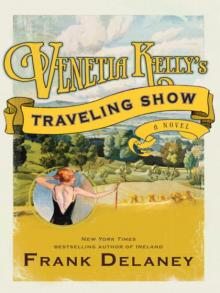 Venetia Kelly's Traveling Show: A Novel of Ireland
Venetia Kelly's Traveling Show: A Novel of Ireland The Matchmaker of Kenmare
The Matchmaker of Kenmare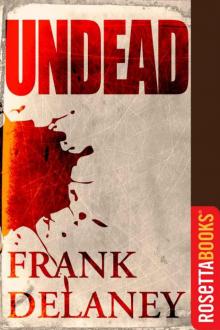 Undead (Kindle Single)
Undead (Kindle Single)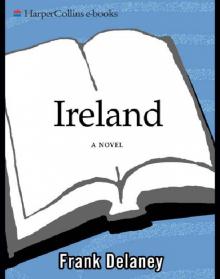 Ireland
Ireland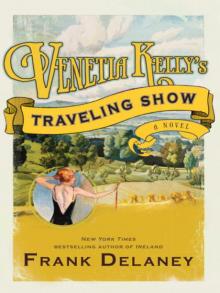 Venetia Kelly's Traveling Show
Venetia Kelly's Traveling Show Tipperary
Tipperary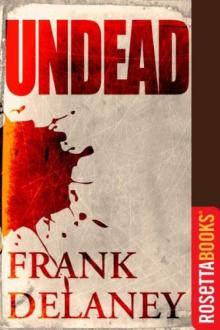 Undead
Undead